Consider the situation as shown in the figure. The coefficient of the friction is 0.5 for all surfaces.
(a) In figure (i) , if F=15N , find the friction force acting on the upper block.
(b) In figure (ii) , find the minimum value of F to move the lower block. The upper block is connected to a rod and held at rest. Find the force applied by rod on the upper block.
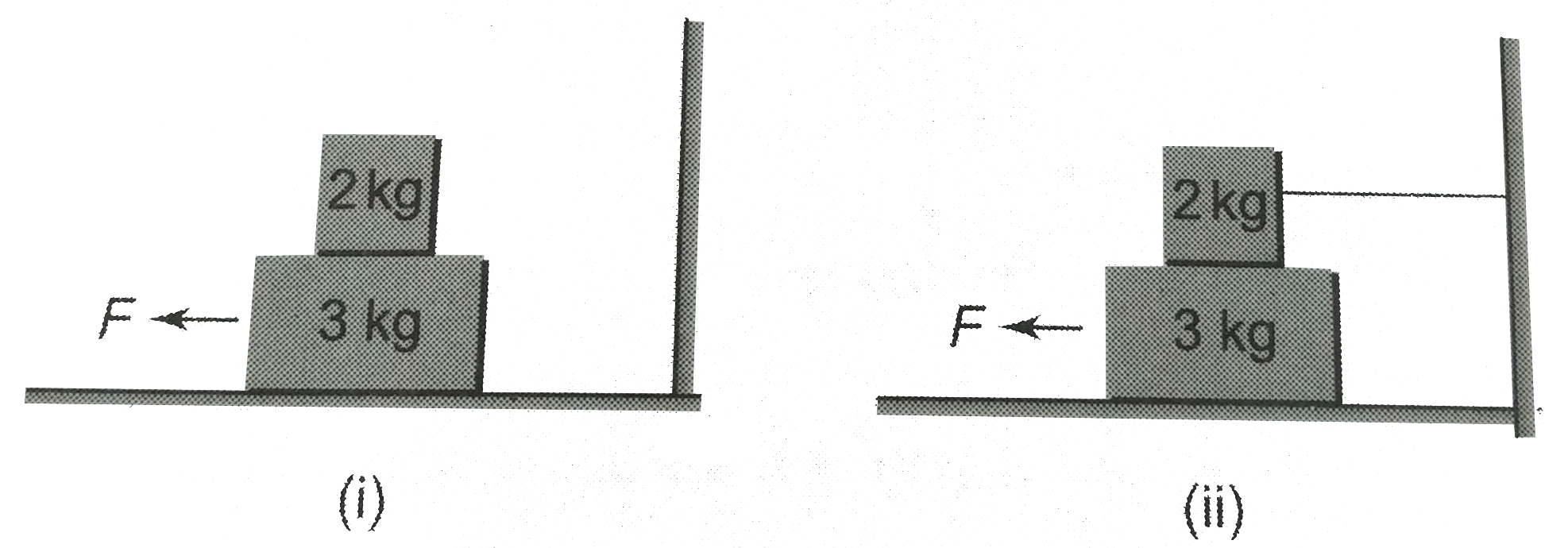
(a) ↑:N0−50=0
⇒N0=50N
fmax=μN0
=0.5×50=25N
Since the applied force 15N<25N
The system will not move . The upper block is at rest hence the friction on it is zero.
(b) 2kg:↑:N0=20N
(f1)max=μN0=0.5×20
=10N
T=(f1)max=10N
3kg:↑:N'−30−N0=0
⇒n'=50N
(f2)max=μN'=0.5×50
=25N
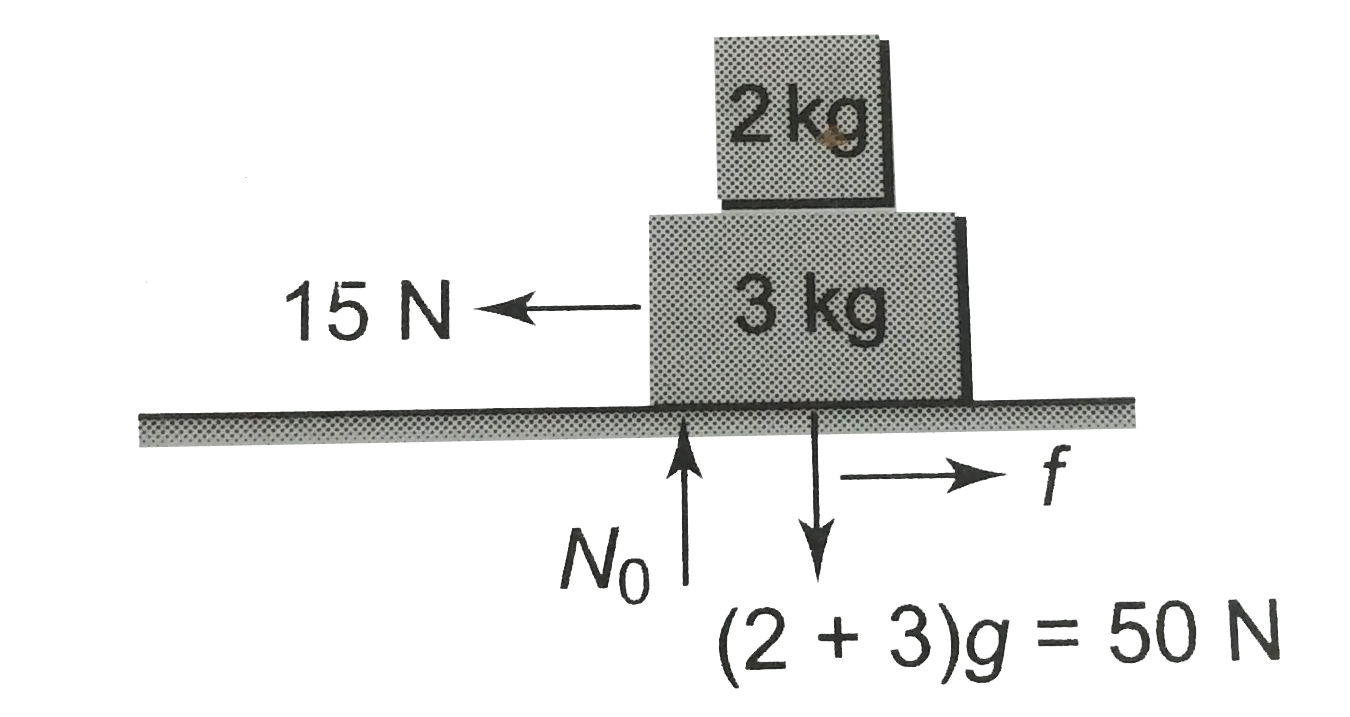
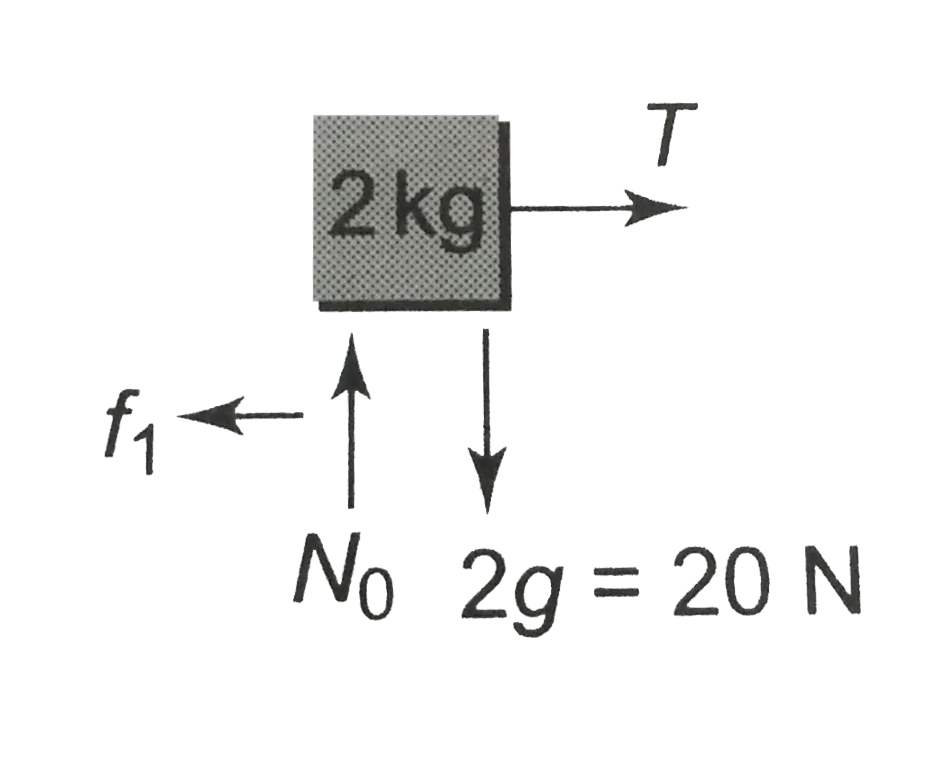

Topper's Solved these Questions
Similar Questions
Find the minimum value of F to move the lower block between the upper block and the surface . Also, find acceleratuion of each block.
 View Solution
View SolutionConsider the situation shown in the figure . The coefficient of friction between the blocks is μ. Find the minimum and the maximum force F that can be applied so that two blocks move together.
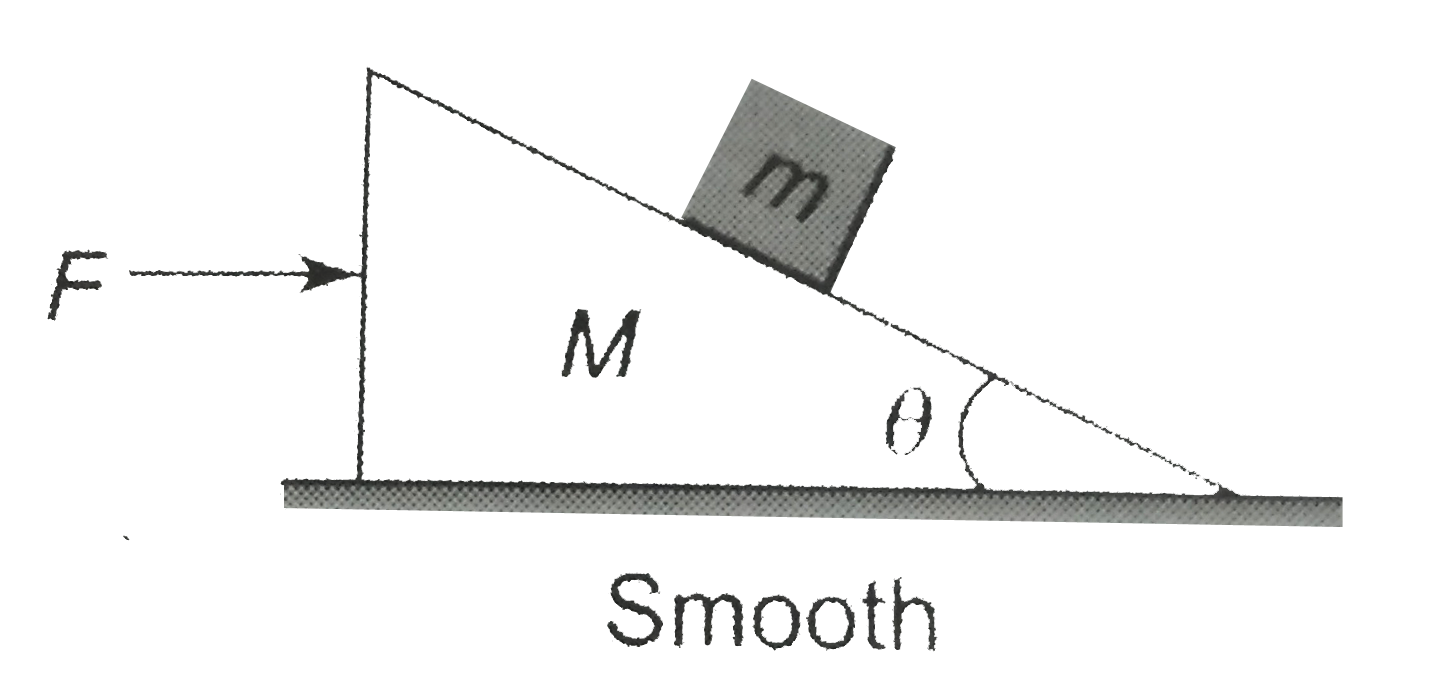 View Solution
View Solution
Knowledge Check
- Question 1 - Select One
The friction acting on the upper block is
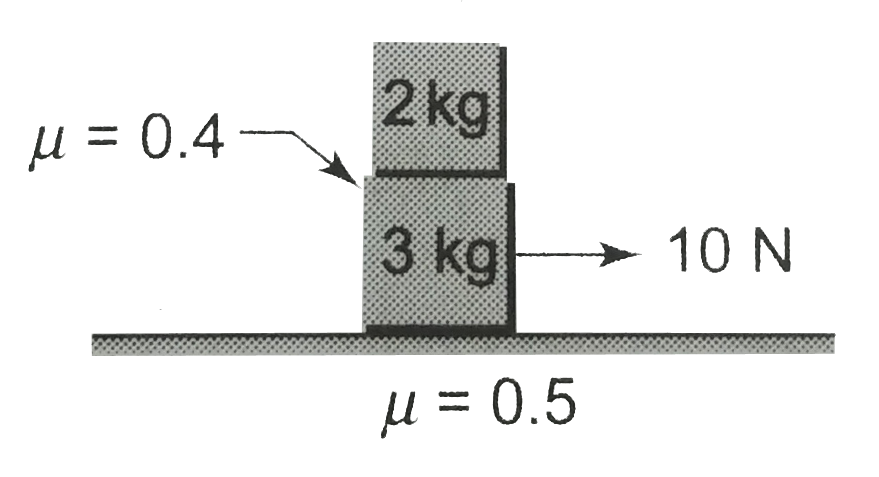 A8NB2NC25NDzero
A8NB2NC25NDzero - Question 2 - Select One
Consider the situation as shown in the diagram.
The coefficient of friction between the block is 0.5. The acceleration of the lower block isA1m/s2B1.5m/s2C2m/s2D2.5m/s2 - Question 3 - Select One
As shown in the figure , the friction force acting on the block is
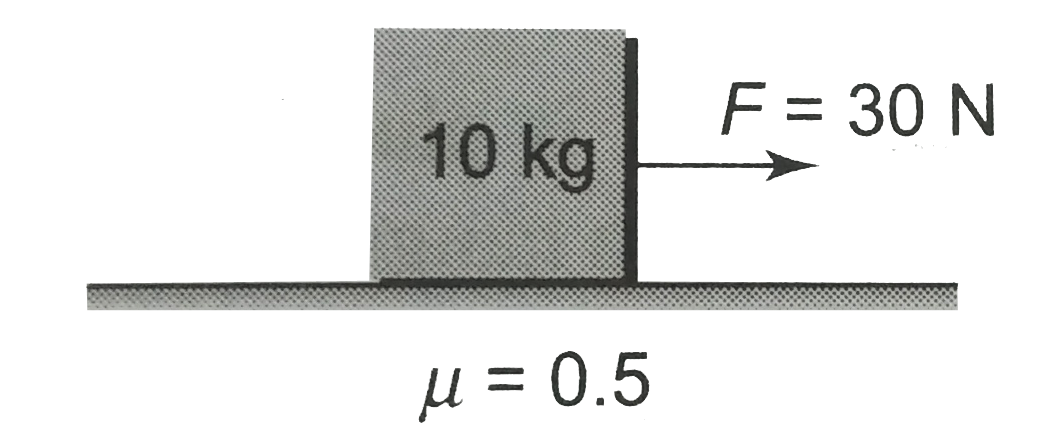 A50NB30NC20NDNone
A50NB30NC20NDNone
Find the force of friction acting between both the blocks shown in the figure.
View SolutionA force of 200N is applied as shown in the figure on block of 3 kg. The coefficient of friction between the block and the wall is 0.3. Find the friction acting on the block. (in N) {Take g = 10 m/s2
 View Solution
View SolutionConsider the situation as shown in figure, frictional force acting between surface and 3 kg block is
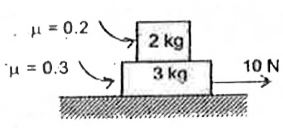 View Solution
View SolutionIf the coefficient of friction between all surface figure is 0.4 then find the minimum force F to have equilibrium of the system.
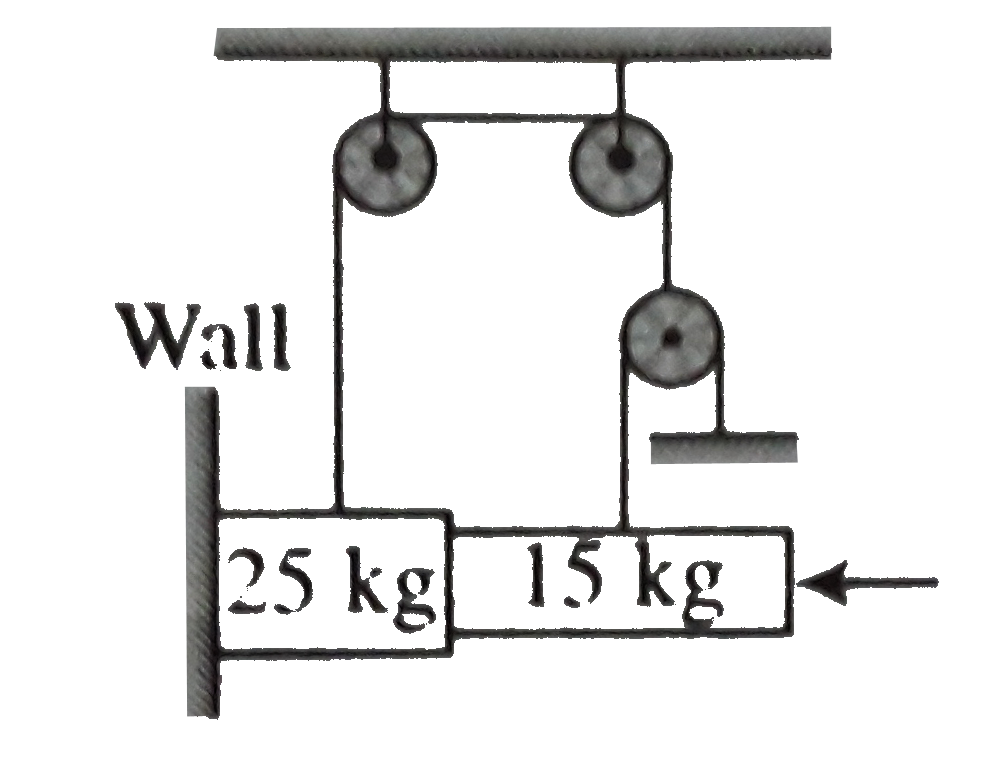 View Solution
View SolutionConsider the arrangement shown in figure. Friction coefficient for all the surfaces are shown in the figure and the rod connecting two upper blocks is horizontal.

What is the minimum value F so that the rear two blocks start sliding with each other :View Solution

